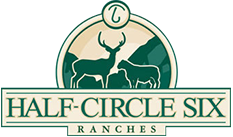Namibia, formerly South West Africa, is home to two million Dorpers. Dorpers make up 80% of the sheep in Namibia. Most of Namibia is very dry desert country which is not suitable for farming or cattle but sheep can do very well. Dorpers along with Damara, Van Rooy, and other hair breeds are the mainstay of agriculture production. The first Dorpers were brought into Namibia in 1964 by Pieter van Schalkwyk’s late father Thys. Up until that time Namibia had been primarily a Karakul raising country. Karakul sheep are prized for their extremely soft skins and are slaughtered at a very young age. The Namibian landscape consists primarily of central highlands, of which the highest point is the Brandberg at 2,606 m. The central plateau runs from north to south, bordered by the Namib Desert and its coastal plains to the west, the Orange River to the south, and the Kalahari Desert to the east. A remarkable strip of land in the northeast, known as the Caprivi Strip is the vestige of a narrow corridor demarcated for Germany to access the Zambezi River. The Namibian climate ranges from desert to subtropical and is generally hot and dry; precipitation is sparse and erratic.
There are 62 registered Dorper and White Dorper breeders in Namibia. The Dorper Society was always run by the South African Society until recently when Namibia disconnected and began their own organization. They still compete with South Africa at shows and sales. The previous South African Championships were won handily by Philip Strauss of Namibia.
Health Status:
Each and every farmer in Namibia understands the importance of things like traceability and disease control. The department of veterinary services has a wonderful network of veterinaries and inspectors, supported by producers. Namibia has been for many years now, the only Southern African country that is allowed to ship meat into the European Union markets. They have to follow the EU standards strictly to keep their contracts, and inspectors visit Namibia every second year.
The only sheep breeds ever entering Namibia are Karakul, Dorper, Persian, Damara and Van Rooy. They never had any of the European breeds. In the 1960’s, South Africa found scrapie in a Suffolk sheep. The government then purchased all Suffolk’s in the country and destroyed them. Since then no scrapie has ever been found in Southern Africa.
Most of the Dorpers in Namibia are being run in the “very hard to farm” Kalahari Semi Desert with the following characteristics: rainfall between 1 and 8 inches of rain annually, deep loose sand surface, sand dunes running parallel north-west, south-east. On average about 120’ apart and up to 45’ high. The rest of the Dorpers are being run in either the Karas mountain range, Black mountain range or the far southern flats. Both mountain ranges get less rain than the Kalahari with very hard and rough surfaces. The far southern flats have an average rainfall of less than 4 inches. Therefore farms are very big and pastures of 300 hectares is very normal. It goes up to 1000ha on some farms. This extensive farming forced breeders over time to select for sheep without faults with very good moving ability. Things like bad pasterns, hocks and front quarters do not survive these extreme conditions.
Namibia is the perfect example of the hard conditions that created the Dorper. Now the Dorper is showing its inherent hardiness all over the world.
